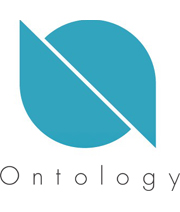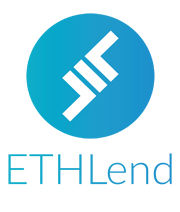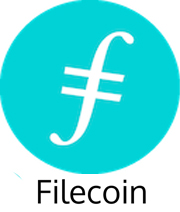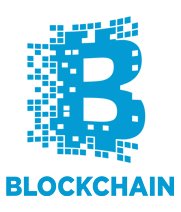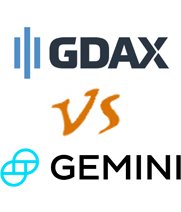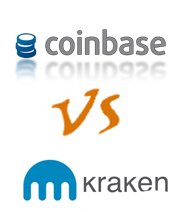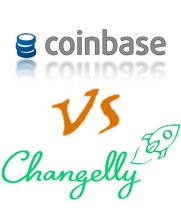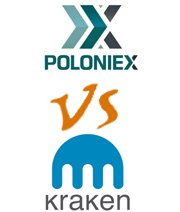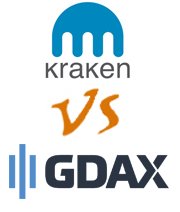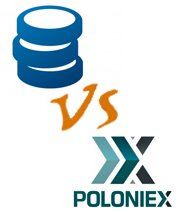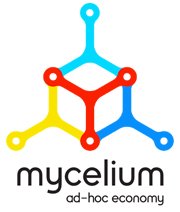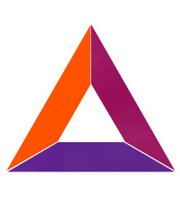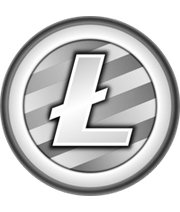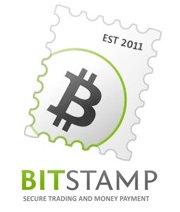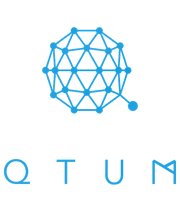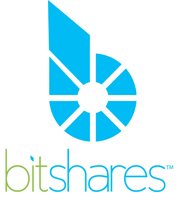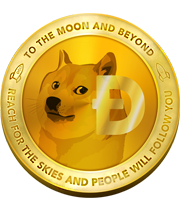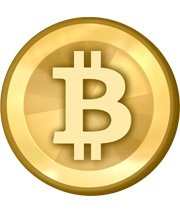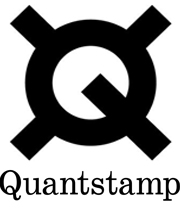
Table of Contents
One of the main functions of blockchain technology is to maintain security above and beyond what’s available in standard, centralized networks. Ethereum is one such blockchain, and while the network itself is secure, the same can’t always be said for the apps that are built on top of it. Smart contracts, developed for the Ethereum network and used to execute agreements in a secure and iron-clad way, aren’t always perfect, and sometimes come with bugs that allow intruders to make off with a killing – like they did with the DAO break-in that lost people over $50 million, and the bug in the Parity wallet that lost users around $30 million.
As we can see, time has shown that smart contracts can be exploited. That’s why Quantstamp is here, a protocol that monitors and assesses the security of smart contracts.
With our guide, you’ll be familiar with what Quantstamp is, how it works, and how you can benefit from it.
If you like Quantstamp, you might be interested in our new list of 2024’s best altcoins to invest in.

How Quantstamp Works
Quantstamp is intended to be an automated solution that vets the security of smart contracts, with a reward system set in place. Right now it works only with the Ethereum blockchain, but Quantstamp is working on expanding its use to other blockchain networks that use smart contracts, like NEO and Lisk.
There are two main parts of Quantstamp. The first is software verification.
Software verification works like this: contributors submit methods of auditing to the Validation node, methods that can include anything from symbolic evaluation (which analyzes what parts of code do what, in order to find gaps or bugs) to static analysis (which deduces the short-term effects of code changes). When techniques are shown to work out, contributors get rewarded in the form of QSP (Quantstamp Protocol tokens). Contributors can’t just join – they have to be allowed it by a vote. Contributors also get rewarded for hosting nodes that perform the verifications.
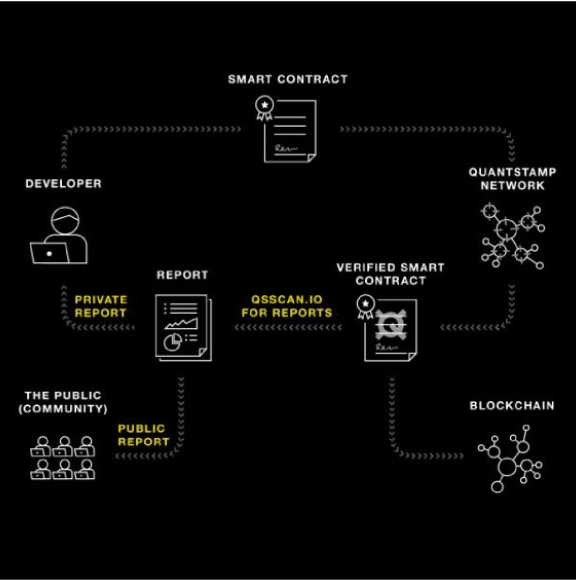
The second part of Quantstamp is the bounty payout system. Developers can include an amount of QSP as a bounty with a deadline for the Bug Finders to, well, find bugs. If nothing is found, you get your QSP back.
Changes and developments in the platform can be proposed and voted on by QSP holders.
As an additional bonus to those who hold QSP, there’s something called the proof-of-caring system that rewards those who submit “proof” (like interacting with the community, contributing to the social media scene for the platform, or just holding QSP in your wallet) with an airdrop of coins from an ICO approved and audited by Quantstamp. This reward encourages people to get involved in the community and contribute to the success of Quantstamp.
The Team Behind Quantstamp
This platform has a pretty sizable team behind it. Last we checked, there were 22 official members behind it, all with backgrounds in development and cryptology.
The company was founded by Richard Ma (who built software for the Bitcoin HFT fund) and Steven Stewart (who worked with the Canadian Department of National Defense in their cryptology department).
This company has already used their auditing skills to help other entities. One of them is Request Network, another blockchain company with whom they’ve formed a partnership. They can also count startup-incubator Y Combinator and Canada’s University of Waterloo as their partners.

Trading Quantstamp
The Quantstamp ICO happened in November of 2024, where the team was able to raise around $30 million from the participants. There’s a total of 1 billion QSP in total, 650 million of which were dispersed to the ICO contributors.
Late 2024 saw Quantstamp doing pretty well, with the price rising from $0.072 to $0.10, and then to $0.82, but since then it’s steadily fallen and settled around $0.30. There were some dips in early February, but they quickly stabilized.
The value will likely be affected by new announcements and by more developers using the service, increasing word-of-mouth and their profile overall. Other valuable coins can be seen at the 2024 list of best altcoins to invest in.
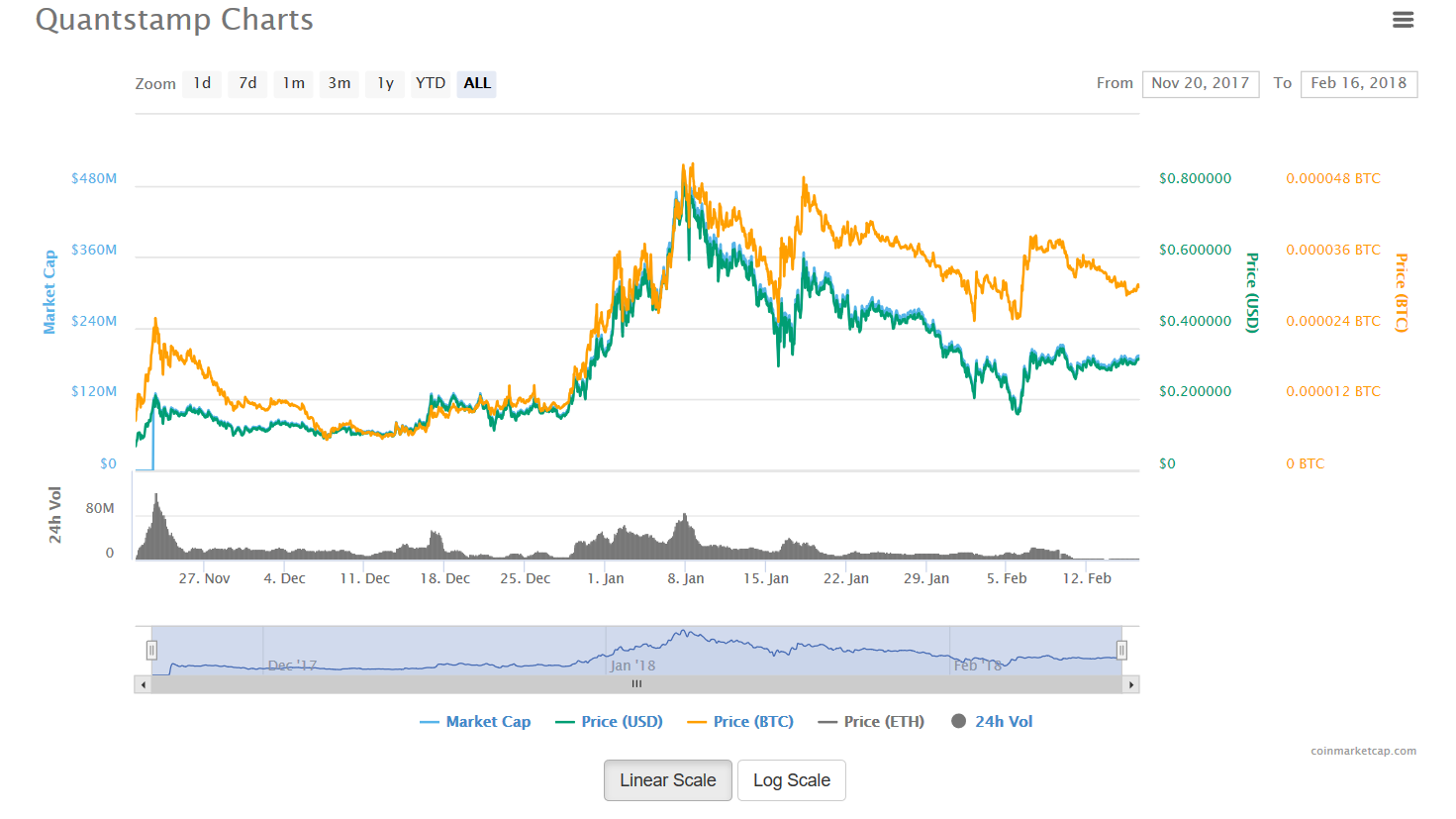
Buying Quantstamp
Quantstamp is easy to find. Right now, the two best places to get it are at Binance and Huobi, two of the bigger exchanges out there. It can’t be purchased for fiat at those two places, unfortunately, so if you don’t already have Bitcoin or Ethereum, you’ll have to go to another exchange that allows you to purchase BTC or ETH straight-up for cash, and then use those newly-acquired crypto funds to buy QSP.
In the future, as QSP grows in the public’s awareness it’s possible that it’ll be available on a fiat-compatible exchange, but for the moment this is one small hurdle that likely won’t deter people who are interested in it.
Storing Quantstamp
The great thing about QSP is that it’s ERC-20-compatible, meaning you can store it in any wallet that supports the ERC-20 protocol. A popular online option is MyEtherWallet, accessible from your browser.
For those who prefer more security, they might want to check out the Ledger Nano S or Trezor, hardware wallets that offer extra security precautions like pin numbers. They can also be disconnected and the contents held in “cold storage,” further preventing any loss from network mishaps or intruder theft.
Quantstamp vs Hacken
These are two fairly-similar services. Both are platforms designed to allow developers a place to crowd-source debugging of software. Both are based on Ethereum. While Quantstamp is meant specifically for smart contracts, Hacken is designed for the debugging and auditing of all software types. Hacken also has a more direct connection to the white hat hacker community, while Quantstamp doesn’t have any similar affiliations. It’s not clear if Hacken has its own token, while Quantstamp has an ERC-20 token for paying people on the service.
Quantstamp vs Blue
These services were both started to address security issues with smart contracts. Both have tokens that can be traded for Ethereum and which must be used to pay for the security services. Quantstamp uses a community-driven, crowd-sourced model for detecting bugs and security flaws, while Blue is a platform and database that is directly-accessible to developers and users for bug checks and finding flaws. Both are trading around $0.30-$0.40 (as of mid February), and both have communities online. It’s not clear how rewards will work with Blue, but Quantstamp has a robust array fo rewards for users who get involved in Quantstamp’s platform.
Quantstamp vs Cardano
These are very different services. Quantstamp is a platform for crowd-sourcing bug fixes for smart contracts, while Cardano is more of a general platform that features high-security smart contracts as a part of its network features. Both have their own tokens, although Quantstamp’s QSP is meant as a token for paying for debugging services on the platform, while Cardano’s Ada currency is meant as a general currency (like Bitcoin), which can also be used as a liquid asset for exchanging coins and currencies as well. Cardano has its own wallet, while Quantstamp does not.
Frequently Asked Questions
- What is the Quantstamp token?
It’s called QSP for short, and is used for in-house transactions. It also entitles holders to voting rights in the platform. - Where can I buy Quantstamp?
You can get it on Binance and Huobi, among others. - Where can I read a Quantstamp review?
You can read a couple on crypto blogs, Reddit, or Medium. - Is there a Quantstamp Reddit?
No, but there’s a Quantstamp account on Reddit that has answered questions from users. - Where can I read Quantstamp news?
You can check out recent developments oncrypto blogs or on the Quantstamp Twitter. - When was the Quantstamp ICO?
November, 2024. - What’s the price prediction for Quantstamp?
If more developers adopt it, the price could go up. - Is there a Quantstamp wallet?
Not an official one, no, but you can use ERC-20-compatible wallets to store QSP. - Is there a Quantstamp presale?
There was, but it’s over now. - What is Quantstamp?
It’s a platform that crowd-sources bug finding in smart contract programs. - What’s the price of Quantstamp?
Around $0.31, last we checked. - Is Quantstamp “crypto”?
Technically the QSP token is a coin used for in-house transactions, instead of a “real” cryptocurrency like Bitcoin or Ethereum, but it could gain in value making it worth trading and using for payment. - Is Quantstamp an exchange?
No, it’s a platform for testing bugs and security in smart contracts. - Do you know how to buy Quantstamp?
Sure! Get your hands on some Bitcoin or Ethereum, and go buy it on Binance or Huobi. - Is Quantstamp on Binance?
Yes.
Conclusion
The decentralized, blockchain-based model of developing web services is catching on, meaning that for nearly every thing you can think of, there’s a blockchain platform for it. Now, with the advent of Quantstamp, you can even test out bugs in your smart contract software using the platform and its community. While the focus seems to be quite narrow at the moment – smart contracts are, after all, only one type of application – Quantstamp could very well open up the door to being a security-auditing platform for all types of apps and dapps. We’ll have to wait to see it get off the ground fully first, but it looks like Quantstamp is headed in the right direction already
If you’re interested in Quantstamp, but want to diversify your investments, head on over to our list of the best altcoins of 2024.



